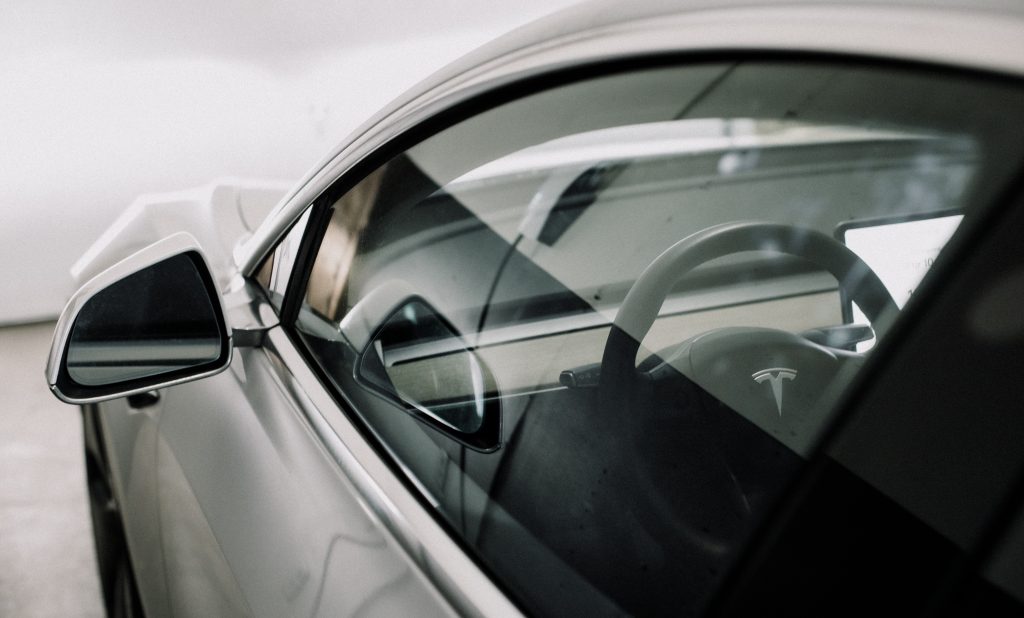By: Otaiba Ahsan

Most vehicles come equipped with some sort of lane-keeping feature. However, the robustness of this ability varies across different cars. Tesla’s Lane Assist is something that adds great value to the ownership experience and provides a safer drive for all. Continue for steps on how to use Lane Assist for your Tesla.
What is Lane Assist?
When driving in your Tesla, the vehicle will monitor the markers on the lane you’re in as well as the surrounding areas for the presence of cars, or other objects like construction cones. Lane Assist uses the cameras and Tesla’s advanced software to provide help to stay in your lane when driving. This is accomplished through visual cues, steering interventions, or both depending on your settings.
As you drive, the on-screen visualization will show you cruising in your lane, as well as everything else around you. If there’s a car or any object in your blind spot, the vehicle will display coloured lines as a visual cue. See Tesla’s image for an example. The colour of the line will give you an idea of how close they are, with the spectrum consisting of white, yellow, orange, or red. White is the farthest from you, whereas red is the closest.
NOTE: It’s critical that you keep the Tesla’s cameras clean and free of obstructions before each drive. This allows the Lane Assist feature to work at its full potential. See our guide on how to correctly clean the exterior of your Tesla.
Lane Departure Avoidance
Part of the Lane Assist system is the Lane Departure Avoidance feature. It’s designed to warn you if your Tesla is drifting out of or near the edge of the driving lane. This only operates when the vehicle is moving between 40 and 90 mi/h on roads with clearly visible lane markings.
You can choose if and how you want Lane Departure Avoidance to operate by tapping Controls > Autopilot > Lane Departure Avoidance and selecting between these options:
- Off: This will keep the feature off, meaning you won’t be warned of lane departures or potential collisions with a vehicle in an adjacent lane.
- Warning: If a front wheel passes over a lane marking, the steering wheel will vibrate.
- Assist: In this option, corrective steering is applied to keep your Tesla in a safe position if it begins drifting.
NOTE: You won’t get any warnings or steering interventions if your turn signal is on, which indicates an intentional lane change.
Emergency Lane Departure Avoidance
Lastly, the final feature of the Lane Assist system is Emergency Lane Departure Avoidance. This automatically applies steering to avoid a potential collision in situations where:
- Your Tesla is departing a lane and may collide with a vehicle travelling in the same direction and adjacent lane. This feature will engage regardless of the turn signal status.
- The Tesla is departing into an oncoming lane and the turn signal is off, while an oncoming vehicle is detected.
- Your Tesla is going off the road and the turn signal is off in a potentially dangerous situation.
To toggle this feature, tap Controls > Autopilot > Emergency Lane Departure Avoidance.
Lane Assist Limitations
Lane Assist in certain situations may not be fully functional or provides inaccurate information, this includes:
- Poor visibility causing the lanes to not be clear. This can be during heavy rain, snow, and fog.
- Bright lights from oncoming headlights or direct sunlight which interfere with the view of the cameras.
- There is something obstructing the cameras such as dirt or snow which prevents them from seeing the lanes.
Tesla has a complete list of limitations for your convenience.
The Bottom Line
The steps on how to use Lane Assist for your Tesla are easy. The Lane Assist system includes Lane Departure Avoidance and Emergency Lane Departure Avoidance. To toggle their settings, go to Controls > Autopilot and touch either of the two options. Both features will help you stay in your lane when driving with either a steering wheel vibration or intervention.
